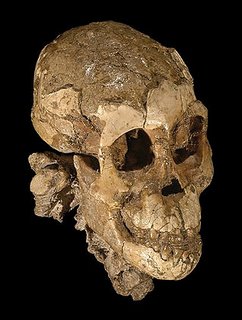No, I'm not talking about the Red Sox. I'm talking about the Space Shuttle Program which is now rebuilding the momentum it lost in the aftermath ofthe Columbia disaster. Next on the agenda are lifting the components of ISS supplied by the Europeans and the Japanese that have been sitting around in storage.
Here's the latest.
"It's obvious to me that we are rebuilding the kind of momentum that we have had in the past and that we need if we are going to finish the space station," said NASA Administrator Michael Griffin during a postlanding briefing. "We have an awesome task ahead of us.... I think we're going to make it."It's all smooth-sailing for now.
That's an assessment that undoubtedly brings a smile to the project's international partners.
"International partners, especially the Japanese and Germans, were crossing their fingers, hoping this mission would pan out," says Ray Williamson, with George Washington University's Space Policy Institute. "If NASA is successful at getting the space station completed, you'll see a lot more openness in Europe and Japan to collaborate with the US in new exploration efforts."
For December's mission, spacewalking astronauts are set to perform tasks that initiate the most complicated phase of station construction, mission planners say. In addition to delivering another truss segment, Discovery's crew will overhaul the electrical wiring and cooling-system plumbing to all of the major US components.
"It would be the equivalent to changing who delivers the electricity and water to your house - not just changing the source, but changing the wires and the pipes coming into the house and being routed around and under the house. It's that significant a change," says Paul Hill, a NASA flight director. "And it's all going to be done outside."
Then come the missions of 2007, during which the shuttle will drop off more basic- infrastructure components. To install them in their permanent locations, space-station crew members will use the station's robotic arm and conduct spacewalks to move existing elements in two high-stakes, slow-motion games of musical modules. At one point, they will have to disable and move the only connector, or node, capable of mating with the space shuttle - critical for resupply and crew exchanges, as well as construction.
If astronauts damage that connector, "the contingency scenarios get kind of ugly," Mr. Hill says. Between December's wiring and plumbing job and the station crew's segment shuffles, the next 12 months will see NASA undertake "the three most complicated things we're going to do in the entire construction of the space station."
Lucy's Child
 ...so to speak. They've dug up a very interesting hominid fossil.
...so to speak. They've dug up a very interesting hominid fossil.In a discovery sure to fuel an old debate about our evolutionary history, scientists have found a remarkably complete skeleton of a 3-year-old female from the ape-man species represented by "Lucy."Interesting news for those of us interested in early hominids.
The remains found in Africa are 3.3 million years old, making this the oldest known skeleton of such a youthful human ancestor.
"It's a pretty unbelievable discovery... It's sensational," said Will Harcourt-Smith, a researcher at the American Museum of Natural History in New York who wasn't involved in the find. "It provides you with a wealth of information."
For one thing, it gives new evidence for a contentious feud about whether this species, which walked upright, also climbed and moved through trees easily.
The species is Australopithecus afarensis, which lived in Africa between about 4 million and 3 million years ago. The most famous afarensis is Lucy, discovered in Ethiopia in 1974, a creature that lived about 100,000 years after the newfound specimen.
The new find is reported in Thursday's issue of the journal Nature by Zeresenay Alemseged of the Max Planck Institute for Evolutionary Anthropology in Leipzig, Germany; Fred Spoor, professor of evolutionary anatomy at University College London, and others.

No comments:
Post a Comment